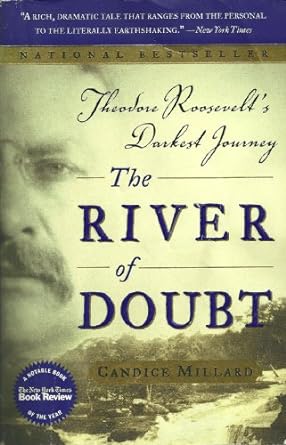When we were all much younger, most of the Fraleigh clan would spend a little time in the American west. The annual vacations were always fun and interesting, and I still think fondly of our visits to obscure places like Wall Drug and Devil’s Tower (I don’t think I’ve met anyone who knows of Wall Drug even casually). Even an out of the way place in North Dakota called (at the time) “Theodore Roosevelt National Memorial Park” (it’s a national park now).
Roosevelt was a president, and quite rough and adventurous. That was pretty much the extent of my knowledge of the man, even after visiting the place (which wasn’t along our regular westward route that normally ran through South Dakota). His face was one of four on Mount Rushmore. But why? Washington — our first president. Jefferson — wrote the Declaration of Independence. Lincoln — freed the slaves. Roosevelt? Owned a ranch in North Dakota and charged a hill in Cuba. I suppose these were interesting for a president, but enough to have his face carved on a mountain?
I just finished a fascinating book that gives me a clue now as to why Roosevelt may have made the cut. I stumbled upon The River of Doubt: Theodore Roosevelt’s Darkest Journey by Candice Millard when it was quoted in another book I was reading. I’m always looking for a bit of history and adventure in my books, so I stopped right there and checked Libby for the Kindle copy. It turned out to be a very well-written page-turner that at times seemed too amazing to be true. The book chronicles a 1913-1914 journey by Roosevelt down the previously unexplored “River of Doubt” in the heart of the Amazon rain forest in Brazil — a journey which nearly cost him his life (and probably did contribute to his death just five years after the journey’s end).
The trip takes place in what seems the heyday of exploration. Robert Peary had (allegedly) reached the North Pole in 1909, and Roald Amundsen reached the South just two year’s later. Roosevelt’s father figured prominently in the founding of the American Museum of Natural History in 1877 (which is located in what is now New York’s Theodore Roosevelt Park), and the quest to collect specimens worldwide added to the thirst to find unexplored places and the wildlife the museum could bring in from them. The museum was a major sponsor of Roosevelt’s expedition, and two naturalists were along to collect specimens.
I can’t tell you the whole story here, of course. I certainly recommend the book. Millard not only details the trip, but also fills in the context of the time, the area, the rain forest and its native inhabitants, and the lives of those on the expedition. It all was an incredible adventure, through which I learned a lot more about Theodore Roosevelt, and by which I realized that Roosevelt was memorialized on Rushmore because of his prominence at the time (work on the monument began just eight years after his death) but more so for his spirit, commitment to the environment, and, as the sculptor himself said, the development of the nation. The River of Doubt makes that all quite clear.

